Daniel Lalonde’s future vision for Design Holding
Daniel Lalonde, CEO of luxury multibrand group Design Holding, shares his vision to make the experience of buying high-end interiors more accessible as the group unveils its New York flagship
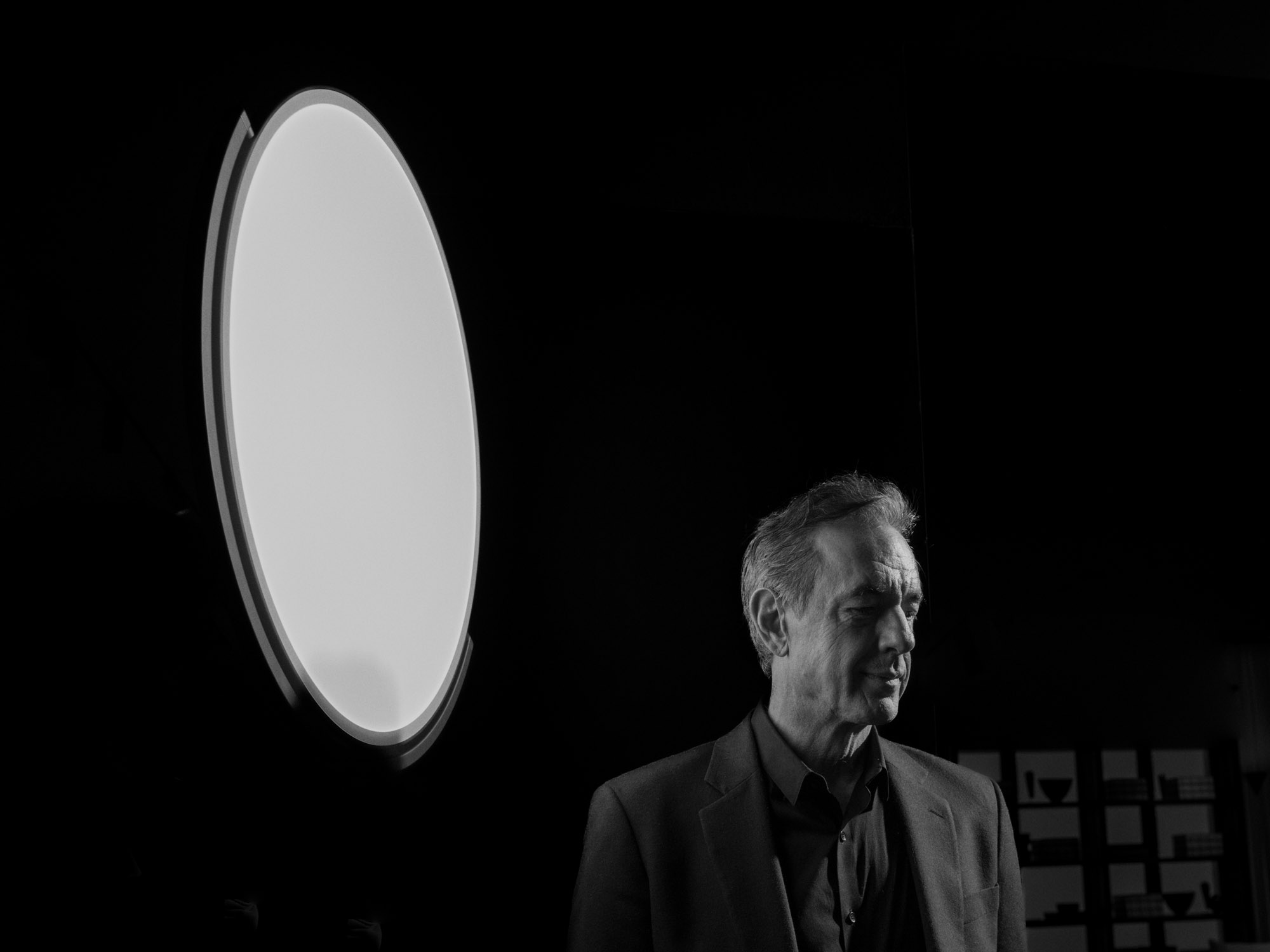
Design Holding is the parent company for a great swathe of modern high-end furniture brands. Born out of Investindustrial’s acquisition of Flos (2014), B&B Italia (2015) and Louis Poulsen (2018), the company has since added another six brands (Maxalto, Azucena, Arclinea, Fendi Casa, Audo and Lumens), giving it an unparalleled position of influence and authority in design-led, luxury interior products. Operating in more than 130 countries, with factories in ten different locations, Design Holding quickly became a powerful custodian of historic and contemporary design. In late 2021, Daniel Lalonde took up the role of CEO.
The Canadian-born businessman had an extensive track record of working with luxury multi-brand companies, including stints as president and/or CEO at LVMH Watches & Jewellery North America, Louis Vuitton North America, Möet & Chandon and Dom Perignon, Ralph Lauren, and French multi-brand group SMCP. For Lalonde, Design Holding represented an interesting challenge, working in a new sector and relocating to Milan after three decades spent living between Paris and New York.
Daniel Lalonde on Design Holding

Design Holding's new retail centre at 135 Madison Avenue
Lalonde begins by admitting that both the physical and professional shift from high fashion to interiors was ‘a leap of faith’. With that said, he’s quick to add that ‘Milan has become my favourite city’, adding that ‘fashion has a lot in common with high-end design, even if the business model is very different’. ‘We have a roster of brands with tremendous heritage,’ he continues. ‘They have founders, a story, a history. And then there’s the craftsmanship – every brand has its own factory. On top of that, we use the best designers.’
Design Holding’s nine brands have amassed an anthology’s worth of designer works, from significant modern classics by the likes of Achille and Pier Giacomo Castiglioni, Poul Henningsen, Arne Jacobsen, Luigi Caccia Dominioni and Verner Panton, to pieces by the grandees of the current era, including Tobia Scarpa, Antonio Citterio, Gaetano Pesce, Philippe Starck, Naoto Fukasawa, Jasper Morrison and Piero Lissoni. You’ll also find work by well-established names of the present, including but by no means limited to Barber Osgerby, Doshi Levien, Vincent Van Duysen, Konstantin Grcic, Michael Anastassiades and Patricia Urquiola. Keeping track of up-and-coming design talent is very much part of the job.
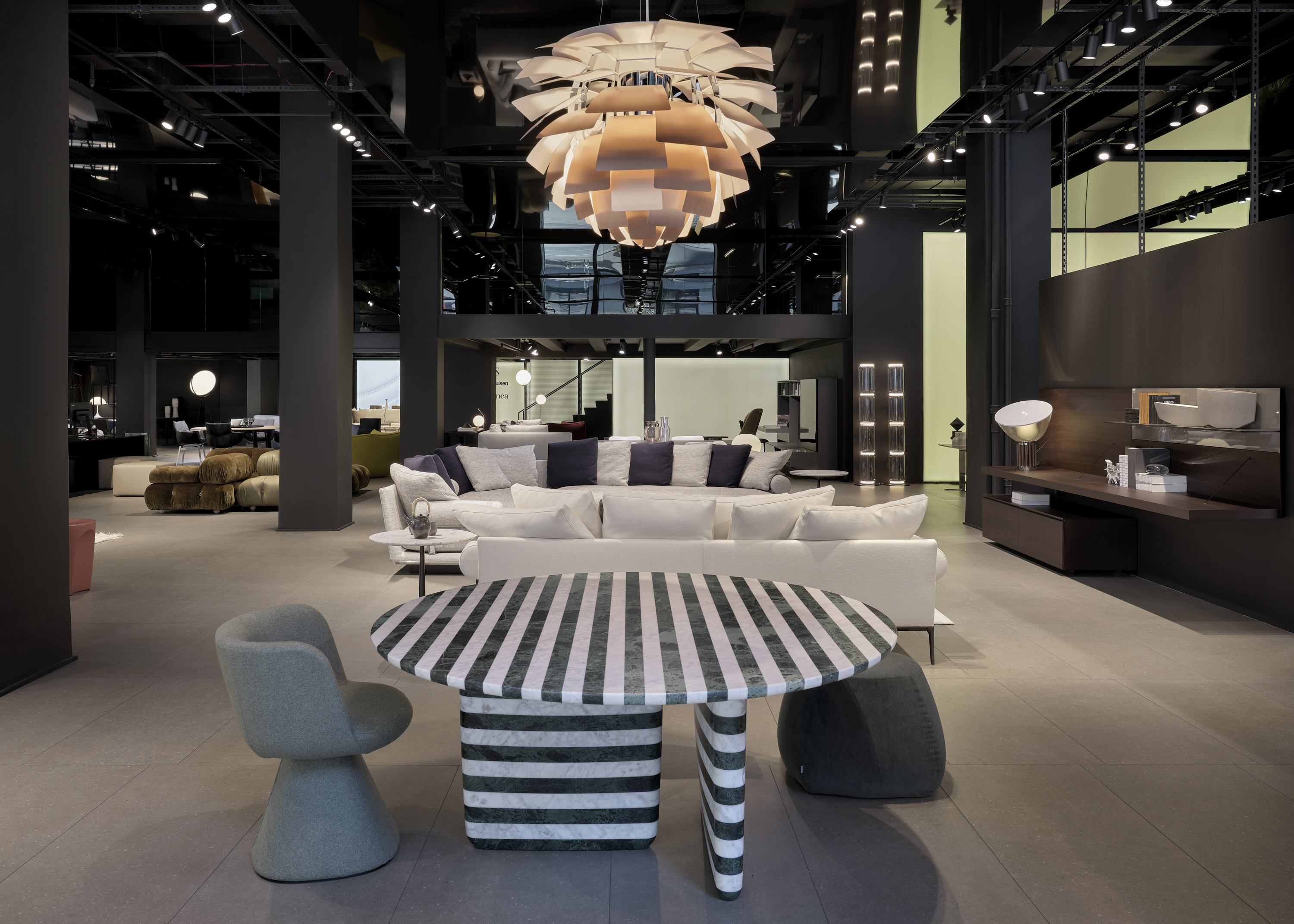
Design Holding's new retail centre at 135 Madison Avenue, featuring furniture by B&B Italia and lighting by Louis Poulsen
What’s also important is to shape a vision that accommodates this heady stew of tradition, heritage, image, ego and economics. However, where furniture differs markedly from fashion is in how the product is sold. ‘More than half of our business is done through wholesale,’ says Lalonde. So the group is making its first major attempt at edging the needle back towards the consumer with the opening of a retail centre at 135 Madison Avenue.
The 25,000 sq ft corner store, part of which has been designed by Lissoni & Partners, provides every Design Holding brand with its own distinctive space, a step beyond the group’s 1,200 monobrand concessions that currently exist around the world. ‘It’s hard for us to exist on Bond Street or Via Monte Napoleone, so we’re creating a presence in urban design districts,’ says Lalonde. ‘Miami is my ideal model, and Madison Avenue hits right in the middle of every part of our strategy. It’s a multibrand experience, a big statement for us in a key design-led city.’
Central to this expansion is the fact that architects and designers play a huge role in generating furniture sales. ‘They influence about a third of all purchases,’ says Lalonde. ‘In the US, it’s closer to 45 per cent. We want to mobilise the design and architecture community, and provide an experience that helps them and the consumer make a decision. This store is one of the biggest statements we’ve ever done.’
Receive our daily digest of inspiration, escapism and design stories from around the world direct to your inbox.

‘Awa’ side table by Naoto Fukasawa and ‘Bend’ sofa by Patricia Urquiola, both for B&B Italia
Technology is another part of this push, with new e-commerce platforms for the individual brands, as well as a configurator app that allows you to drop key pieces into your existing space to see how they look. Nothing, however, beats experiencing a chair, table, light or kitchen in the flesh, so the Madison Avenue store gives customers this crucial hands-on interaction. ‘It’s a one-stop shop, allowing you to equip all the rooms in a house,’ says Lalonde. Other pioneering projects, like the new West Coast model home at the Mandarin Oriental Residences in Beverly Hills, have been created to showcase the products of a single brand, in this case B&B Italia.
One of Lalonde’s most important roles – and one which plays to his experience and strengths – is to ensure that each company retains its own distinct identity and character. He admits there are important synergies, like the ability for contract teams to collaborate across large projects and bring clients from one brand to another, but he adds, ‘I don’t worry too much about cannibalisation [between the brands] – they are complimentary. There’s a very different design DNA between a B&B Italia sofa and one from Maxalto, for example. I’m focused on the groups working together, but my job is also to ensure they develop products in line with their own DNA.’
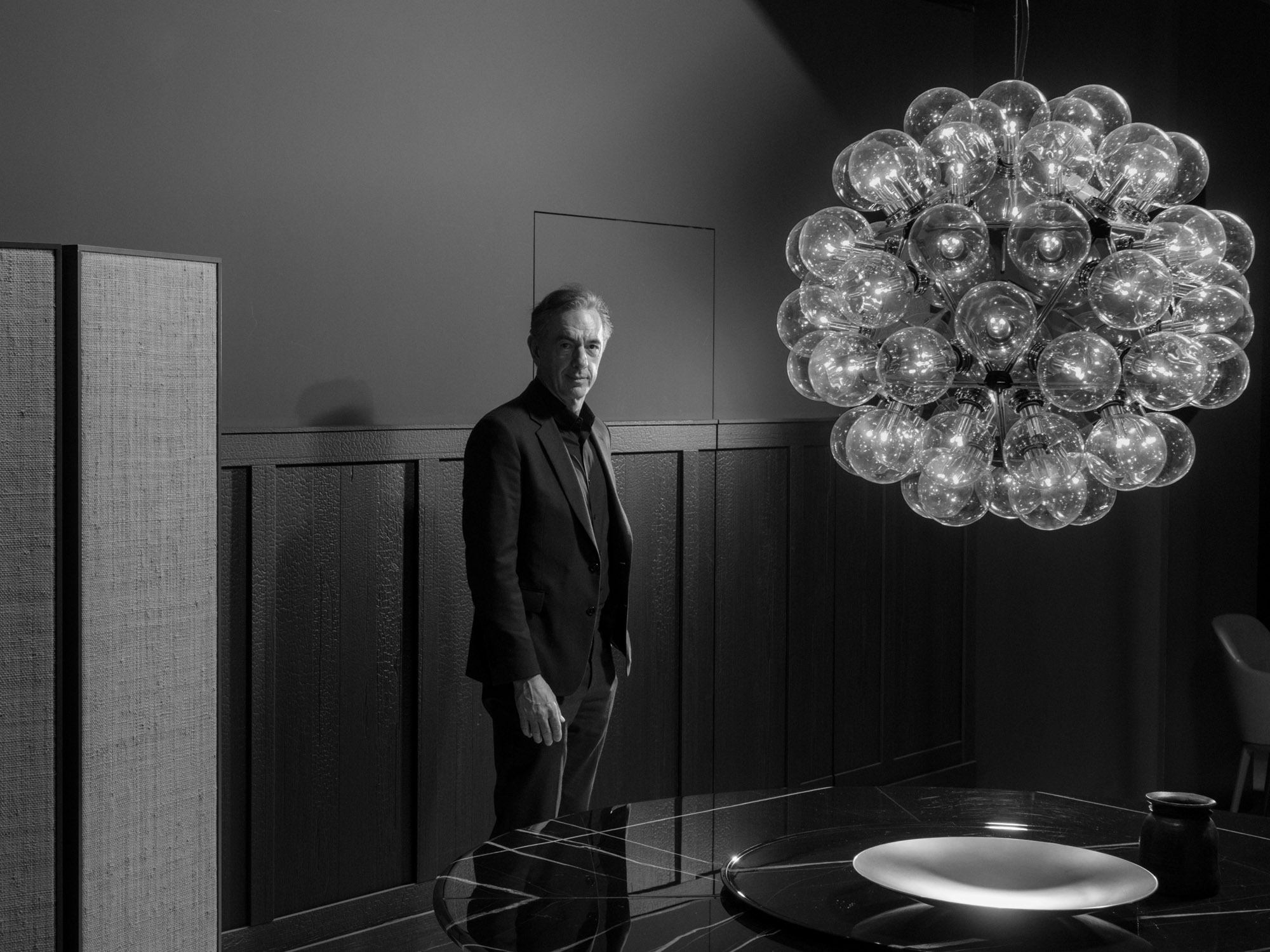
Daniel Lalonde with a Taraxacum 88 Suspension Lamp by Achille Castiglioni for Flos
The creative teams from all nine Design Holding brands meet to discuss upcoming products, but Lalonde admits that he has to try and ‘divide myself into nine parts’ to accommodate their individual requirements. Alongside the Italian brands (B&B Italia, Maxalto, Azucena, Flos, Arclinea and Fendi Casa), Design Holding oversees Danish brands Louis Poulsen and Audo, and the San Francisco-based Lumens.There are other benefits of scale, most notably the group’s environmental, social and corporate governance (ESG) strategy.
‘We’ve been on this for a very long time,’ says Lalonde, stressing that its products emphasise longevity and quality above all else, as well as being easy to maintain and mend. On top of this, there is the ongoing sourcing of sustainable and ethical supply chains, research that all nine brands can benefit from. ‘For example, we source wood from the same certified forests across all the brands.’ Beyond materials, Lalonde stresses that the individual manufacturers still go their own way, using techniques and skills they have built up over generations.

B&B Italia’s ‘Le Bambole’ armchair, upholstered in a hand-drawn Fungi Forest toile print designed by Stella McCartney
‘At the heart of what we do is creativity and innovation,’ he says. ‘We need to keep the heritage and the skillsets, because that’s very specific to each brand.’ To do this, the company has invested in technical schools in Italy to ensure there’ll be a next generation of craftspeople. Conveying the breadth and scope of the manufacturing process is an art in itself, as is the task of taking the brands into new markets. ‘We’re focused on the global luxury market,’ says Lalonde. ‘Our customer might have a ‘Birkin’ bag, a Cartier watch and Jimmy Choo shoes, as well as an Arclinea kitchen, a Flos floor lamp and a B&B Italia sofa. However, this industry is not yet scaled or developed in Asia.’
China is very much on Design Holding’s target list. ‘We have plans to open stores there this year,’ admits Lalonde. ‘It’s a big luxury market but a relatively small high-end design market. We’re still in discovery mode.’ With a portfolio that includes some of the most important furniture pieces of the past century, Design Holding is well placed to bring the enduring value of design to a wide, albeit discerning, global audience.
A version of this article appears in the April 2024 Issue of Wallpaper* available in print, on the Wallpaper* app on Apple iOS, and to subscribers of Apple News +. Subscribe to Wallpaper* today.
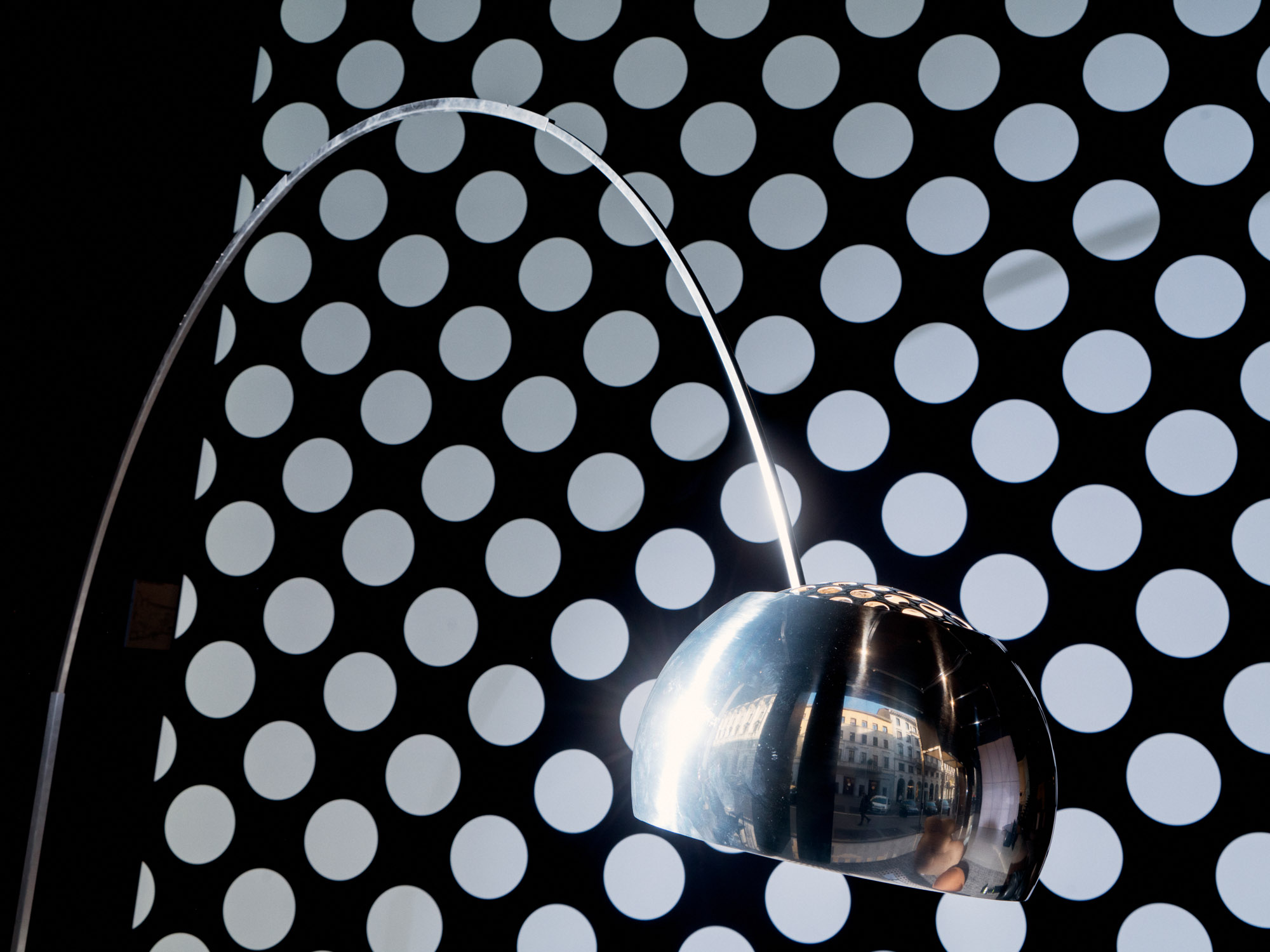
‘Arco’ floor lamp by Achille and Pier Giacomo Castiglioni for Flos

B&B Italia’s ‘Le Bambole’ armchair, upholstered in a hand-drawn Fungi Forest toile print designed by Stella McCartney
Jonathan Bell has written for Wallpaper* magazine since 1999, covering everything from architecture and transport design to books, tech and graphic design. He is now the magazine’s Transport and Technology Editor. Jonathan has written and edited 15 books, including Concept Car Design, 21st Century House, and The New Modern House. He is also the host of Wallpaper’s first podcast.
-
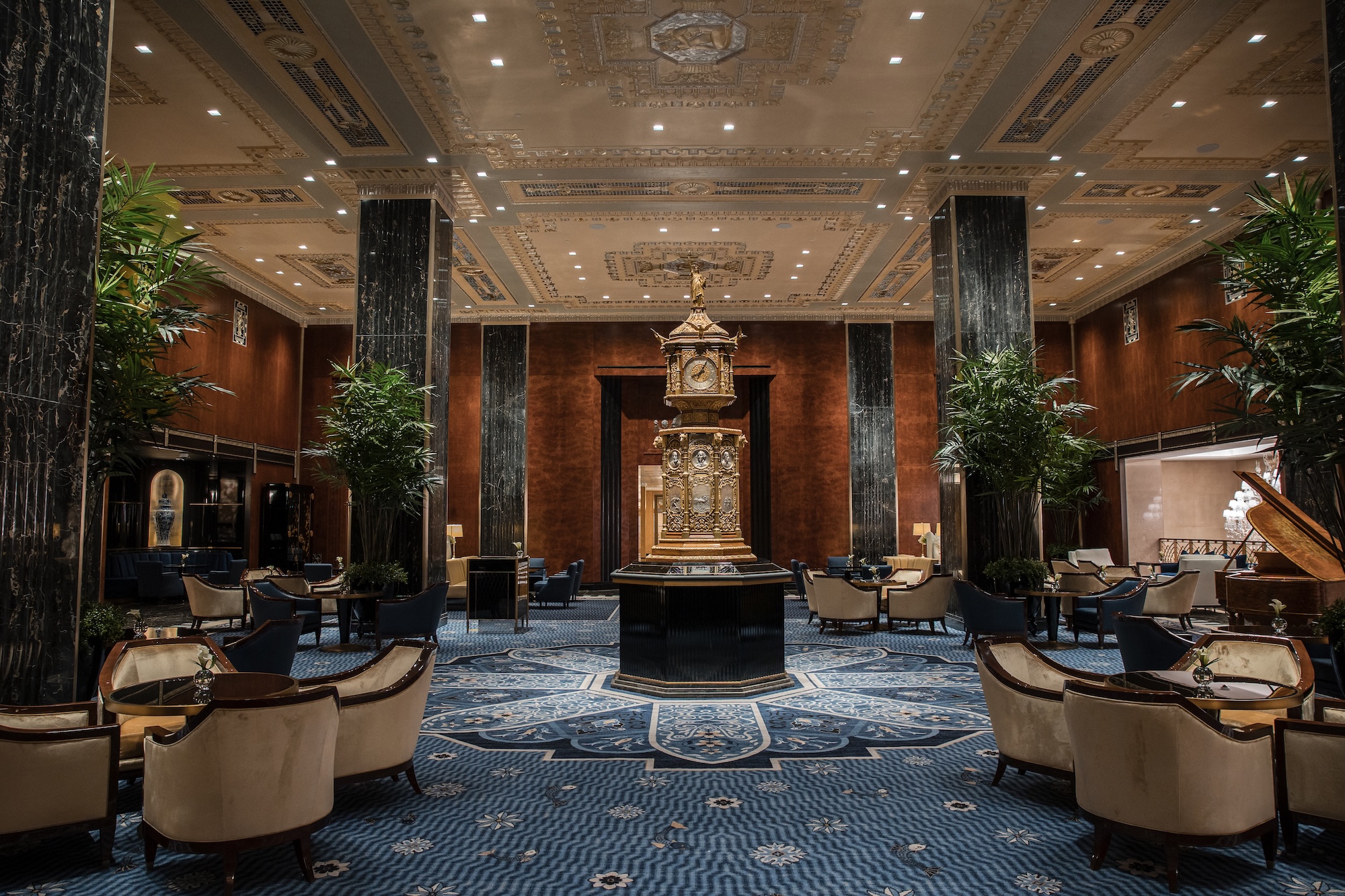 Is the Waldorf Astoria New York the ‘greatest of them all’? Here’s our review
Is the Waldorf Astoria New York the ‘greatest of them all’? Here’s our reviewAfter a multi-billion-dollar overhaul, New York’s legendary grand dame is back in business
-
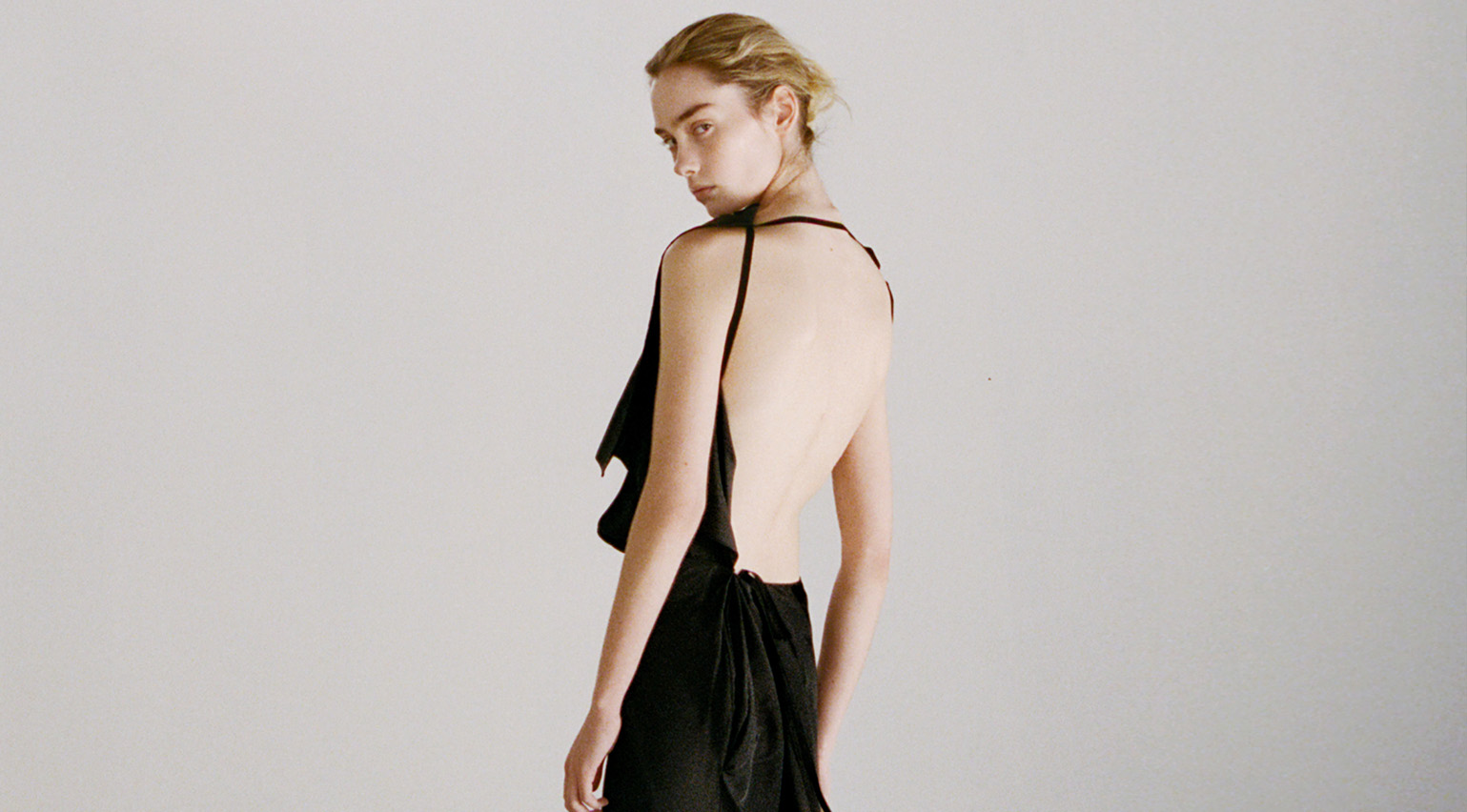 Colleen Allen’s poetic womenswear is made for the modern-day witch
Colleen Allen’s poetic womenswear is made for the modern-day witchAllen is one of New York’s brightest young fashion stars. As part of Wallpaper’s Uprising column, Orla Brennan meets the American designer to talk femininity, witchcraft and the transformative experience of dressing up
-
 A new Korean garden reimagines tradition for the 21st century
A new Korean garden reimagines tradition for the 21st centuryThe new Médongaule Korean Gardens in Gyeonggi Province explore the country’s rich tradition; within it, the Seongok Academy Building provides a layered spatial experience drawing on heritage and a connection with nature
-
 Introducing Wallpaper* April 2024: Global Interiors
Introducing Wallpaper* April 2024: Global InteriorsTake a global tour of contemporary design with Wallpaper* April 2024, from a Manhattan ‘cathedral of fried chicken’ to a Mornington Peninsula beach house. On sale now
-
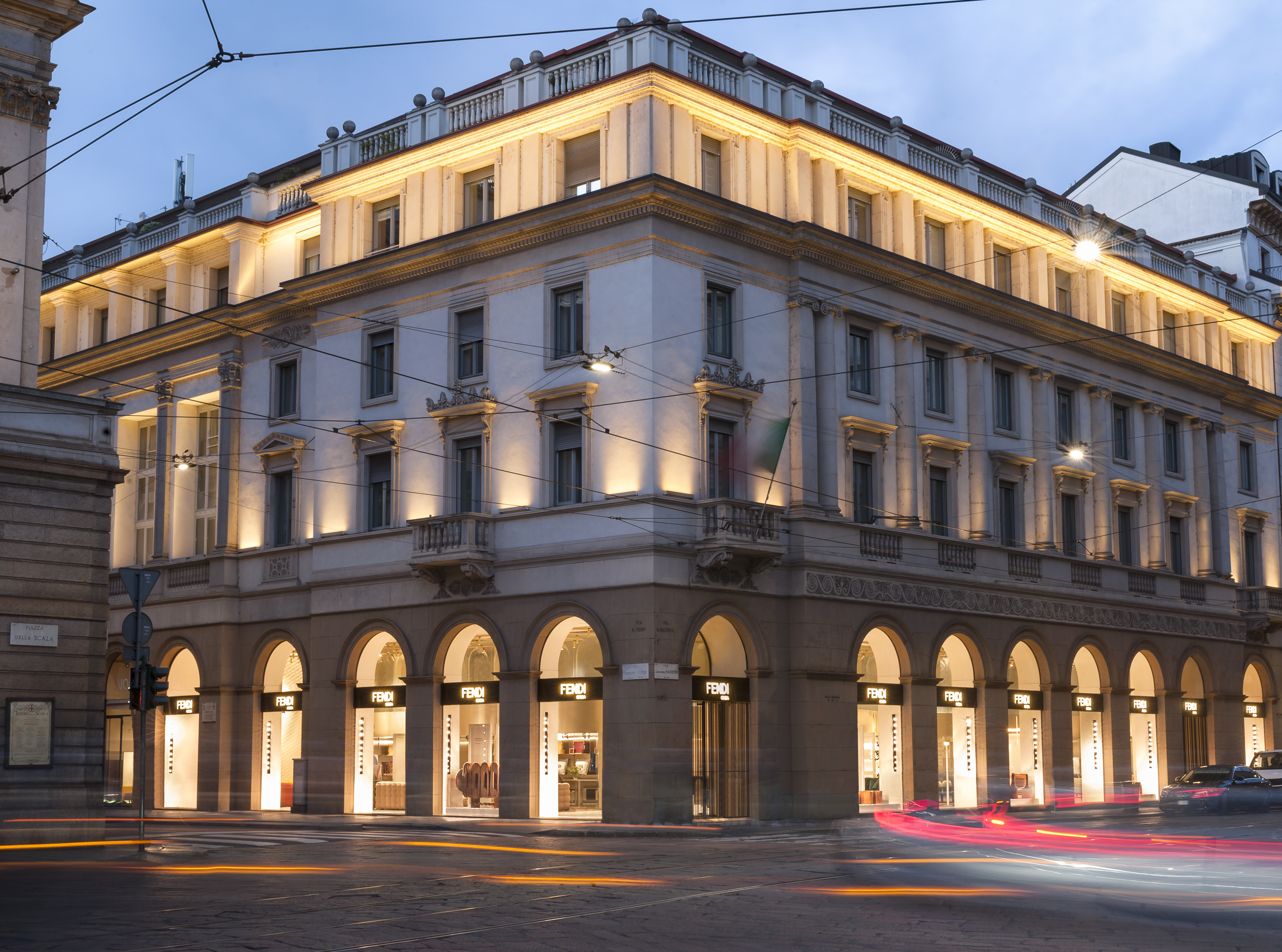 Design Holding CEO Daniel Lalonde on the group’s mission to innovate and inspire
Design Holding CEO Daniel Lalonde on the group’s mission to innovate and inspireOn the eve of Salone del Mobile 2023, we speak to Daniel Lalonde, CEO of Design Holding, on how the design group plans to innovate and inspire through the best design collaborations, while keeping close and accessible to customers and design communities worldwide
-
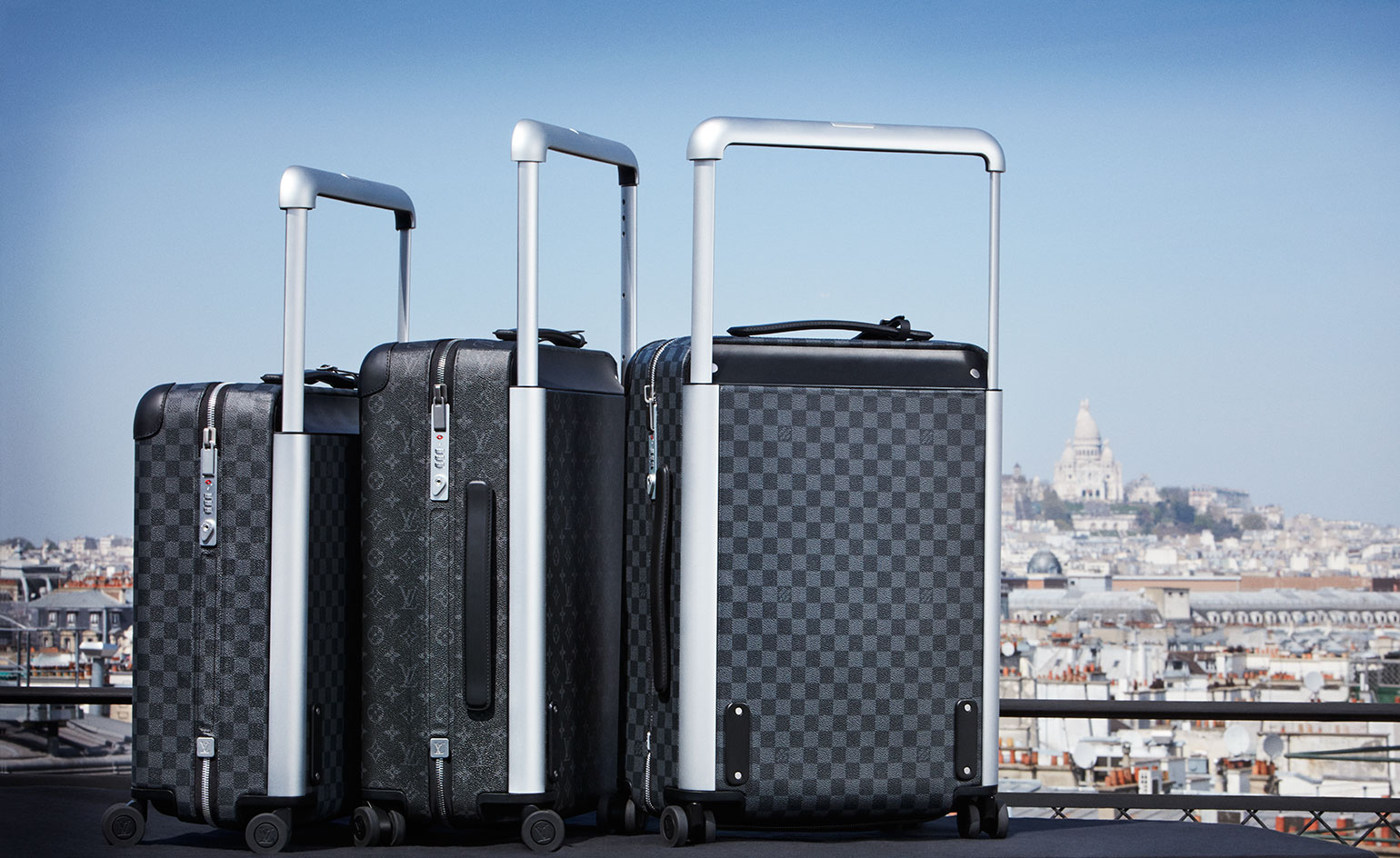 Rolling out: Marc Newson reinvents Louis Vuitton’s trunks for the 21st century
Rolling out: Marc Newson reinvents Louis Vuitton’s trunks for the 21st century